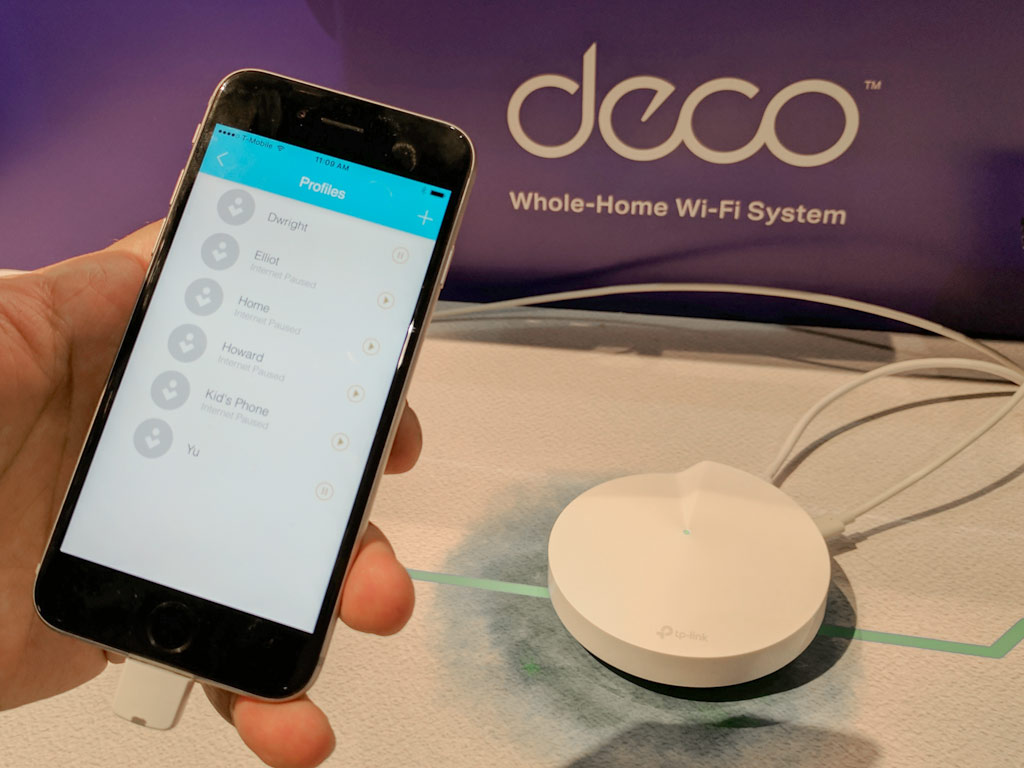
While autonomous cars, smart appliances and super thin TVs made most of the headlines at CES 2017 last week in Las Vegas, an underlying trend was mesh networking in the home. Think of it as Wi-Fi with a wider net that doesn’t lose signal strength at each point, and it will be accessible to you throughout the year.
The concept of mesh networking isn’t entirely new, but it is going to be an option in reducing latency and dead zones in homes. Mesh networks are multi-device setups of at least two units that are spread out to widen access like a net.
This is different from what Wi-Fi extenders and bridges do, where the existing connection from the central access point — meaning the router — is simply expanded to generate a better signal in another part of the home. Powerline adapters route the Internet connection through the home’s power grid to establish a wired connection, despite the router and connected device being in two separate rooms.
What mesh networking means
Mesh networks work differently in that the nodes—meaning the units that aren’t connected to the modem and dispersed in other rooms—are essentially extensions of the router itself. Think of it like a strip of lights that traverse and snake through different rooms. It may derive power from one end, but the intensity and visibility of the lights is no different, regardless of where you are.
In other words, it’s like having the same router in multiple rooms. The power and performance of each node is equal to that of the router itself, and because they are constantly in sync, the connection between them enables a consistent throughput in a bigger space. Bear in mind that Wi-Fi systems are more about range than about speed, however they do go hand-in-hand. If you are in a room further away and looking for speed on par with what you would get right next to your router (where the modem is), then a mesh Wi-Fi system may be exactly what you’re looking for.
While routers have improved immensely in offering better throughput, they can only cast so wide a net in maintaining the same level of bandwidth. Generally, the further away you get from a router, and the more obstacles in between, the more the signal degrades. In addition, the 5GHz band is generally the more powerful in dual-band routers, except its range isn’t as wide as the 2.4GHz band.
It’s a fairly common issue in larger multi-story homes, or even smaller ones that were built a very long time ago when building materials were less porous. Mesh networking can help push through against those scenarios, better covering larger spaces that even a single powerful router can’t reach.
Mesh systems are coming this year
Startups initially tackled this with their own mesh kits, but now the big router manufacturers are also getting in on the action too. Linksys unveiled its Velop mesh kit this month, offering it in single, two-pack or three-pack configurations. The units are identical out of the box, so it doesn’t necessarily matter which one is connected to the router, but in placing the others throughout the home, the SpotFinder in the Linksys app can help determine the best location.

D-Link has its own take on this with its Covr system, which would start out as a basic hub-to-extender functionality, but then become more like a mesh through a subsequent update. The look is a little different in that it is obvious which one is the router, and which is the satellite unit. More of them can be added to expand the mesh, though there’s no word yet on when that update will enable all that.

TP-Link is also getting into the fray with the Deco M5 and M5 Plus. Both are identical except for the fact the Plus includes powerline functionality. Multi-unit configurations have the same looking devices, much like Linksys’ Velop system, so there is no confusing which one connects to what. More details on how these work and what they’ll do will be coming soon. They were shown at CES 2017, and I’ll be covering any updates along the way.

Netgear had already launched its Orbi Wi-Fi system in 2016, which comes in a two-pack. It’s a pretty powerful combination, offering tri-band and MU-MIMO, among other features. All told, it’s designed to cover 4,000 sq. ft. (2,000 + 2,000) total when both units are set up.
I noted that other features are covered, and that’s part of the benefit in how Wi-Fi systems work. MU-MIMO, which better distributes bandwidth to all devices that need it, rather than in a sequential order, is a staple. Most devices still don’t support it yet, but they will in greater numbers this year.
Another is in how these systems can better navigate through channels to clear up congestion. Routers and their connected devices communicate on the same channel, and when there’s a lot going on there, Wi-Fi performance can take a hit. Since the multiple units in a mesh network operate as one big mesh, each node can adjust to a different channel for smoother connections and downloads. Wi-Fi extenders generally can’t do that.
Multi-unit systems are probably overkill for condos or apartments, unless your space is very big, or you live in an old building with sputtering range. Mesh has mainly been designed to blanket a larger area with stronger Wi-Fi, though a standalone unit can certainly be a strong router in its own right. And if you need to, you can always expand on it with another unit to act as a node.
One element to all this is how a smartphone can control it all. From the initial setup to regular management, mesh Wi-Fi systems rely on mobility and remote access to ensure everything runs smoothly. All manufacturers in this space get that, and have been making or updating their apps to work with their systems for that reason.
App integration isn’t new—routers have had that for quite some time—but it’s different when you can see how well your devices are connected, and whether or not a node has run into a problem.
Mesh will be the big story in home networking this year, and with the Velop coming this month, this home networking sub-category will gain momentum as the year goes on.



